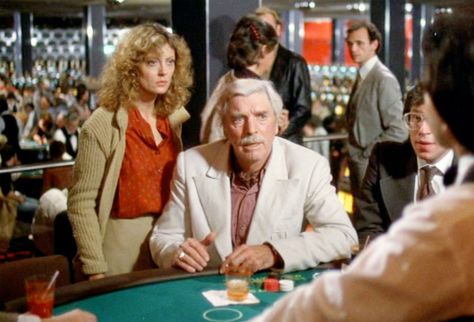By Dennis Hartley
(Originally posted on Digby’s Hullabaloo on May 15, 2021)

“It isn’t easy to accept that suffering can also be beautiful… it’s difficult. It’s something you can only understand if you dig deeply into yourself.”
― Rainer Werner Fassbinder
An oft-quoted Chinese philosopher once proffered “The flame that burns twice as bright burns half as long”. He could have been prophesying the short yet productive life of Rainer Werner Fassbinder. Over a 15-year period ending with his death in 1982 at age 37, the German playwright, director, screenwriter, actor, producer, editor, cameraman, composer, designer, etc. churned out 40+ feature films, a couple dozen stage plays , two TV mini-series, and various video productions, radio plays and shorts.
As illustrated in a new biopic, he also snorted lots of coke, cruised a lot of rough trade, threw a lot of tantrums, and generally treated friends, lovers, and actors (frequently all one and the same) like shit. It could be argued he didn’t suffer for his art, so much as make those around him suffer for it. He was “the bad boy” of New German Cinema.
Hence the title of Oskar Roehler’s fitfully inspired Enfant Terrible, which is propelled by Oliver Masucci’s scenery-chewing turn as Fassbinder (a performance that vacillates between Bruno Ganz as Hitler in Downfall and John Belushi as Bluto in Animal House).
After several years of rushed, provocative and audience-alienating theater productions, Fassbinder declares to his long-suffering collaborator Kurt Raab (Hary Prinz) “Wherever you go is material that is about how people see their dreams and how their dreams get destroyed. The theater can’t do it. Only cinema can do it.” This launches a torrent of rushed, provocative and audience-alienating films.
Eventually critics and audiences warm to Fassbinder’s work, starting with his internationally acclaimed 1974 drama Ali: Fear Eats the Soul. The narrative thread about Fassbinder’s relationship with leading man El Hedi ben Salem (Erdal Yildiz) provides Enfant Terrible with an emotional core it otherwise lacks (as nihilism runs through much of Fassbinder’s work, perhaps it is intended to reflect the artist himself).
Roehler cannily replicates the aesthetic of Fassbinder’s films; bold colors, the cinematography (by Carl-Friedrich Koschnick), production design (done by Roehler himself), self-consciously theatrical sets, and the use of doorways and windows to create multiple frames within the camera frame indicates that he did his homework.
Using metatheatre, Roehler and co-writer Klaus Richter draw parallels between snippets of Fassbinder cruelly manipulating actors on set and vignettes depicting his tortured personal life, but it becomes repetitive. It’s a shame they didn’t take a deeper dive into Fassbinder’s creative vision; what you’re left with is a highlight reel of his filmography sandwiched between yet another sad study in willful self-destruction.
(“Enfant Terrible” is now playing in select physical and virtual cinemas)









